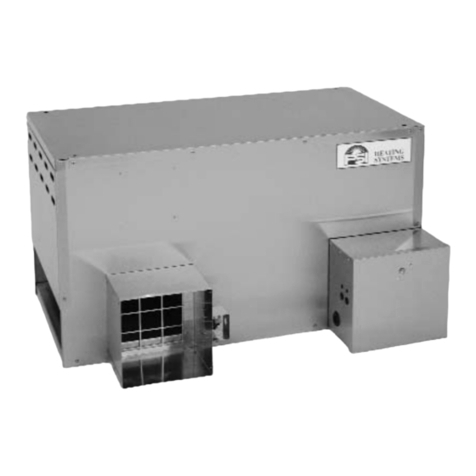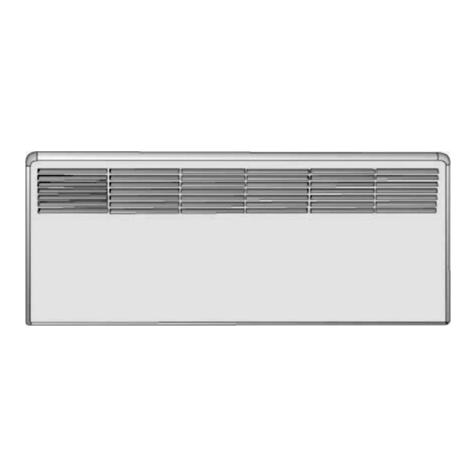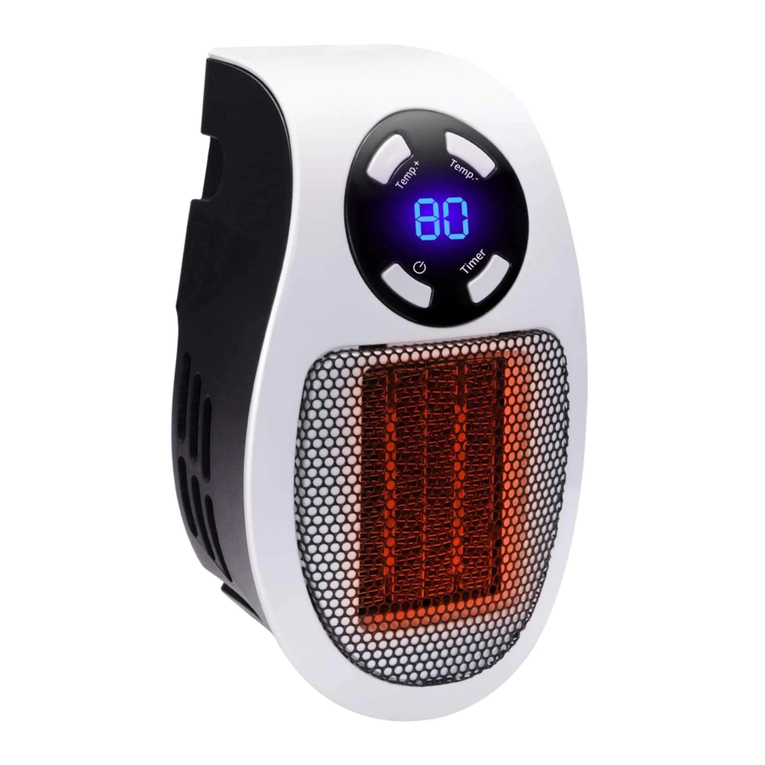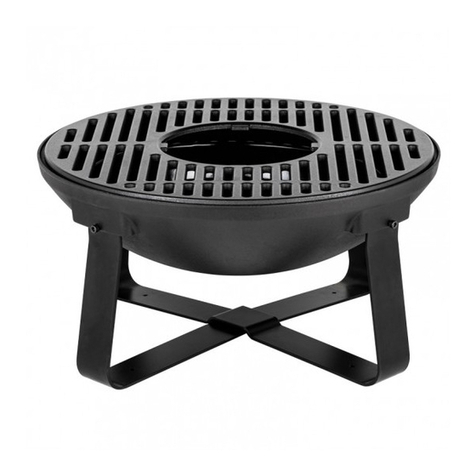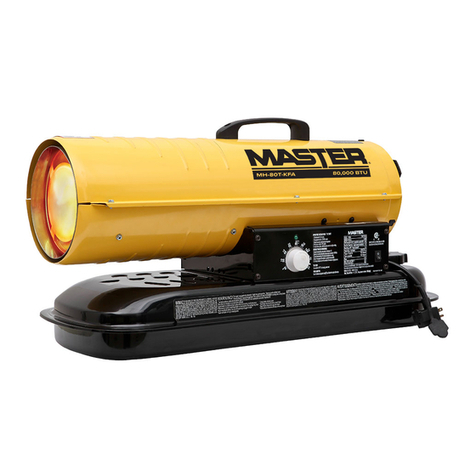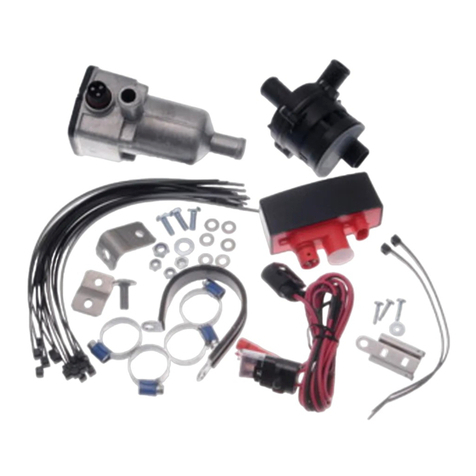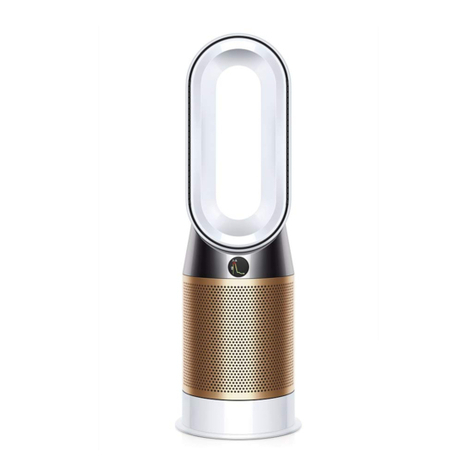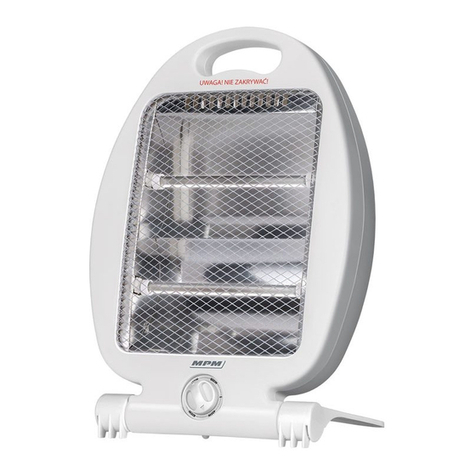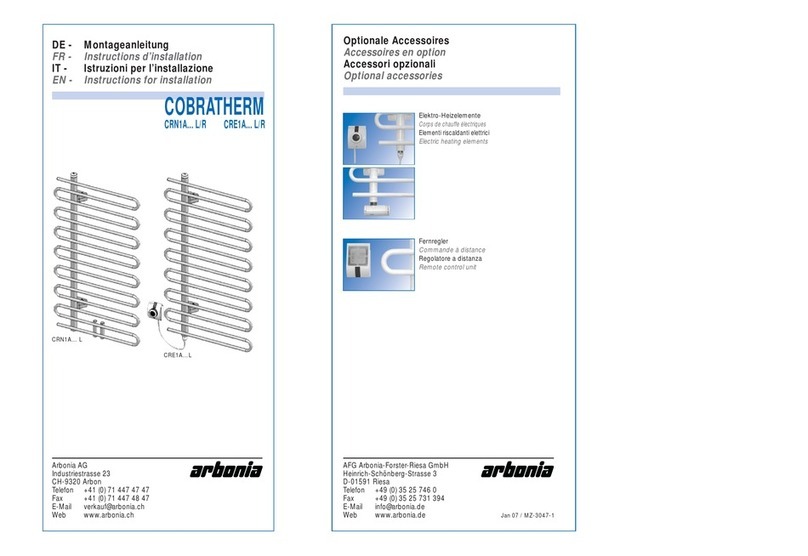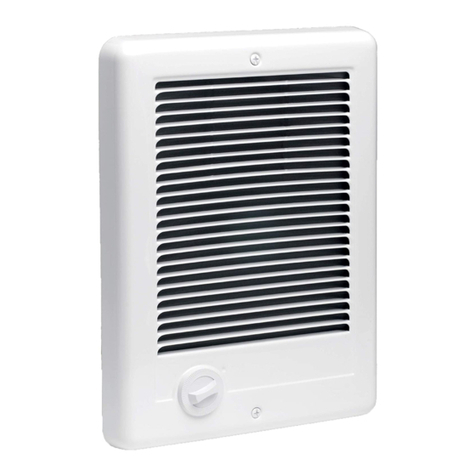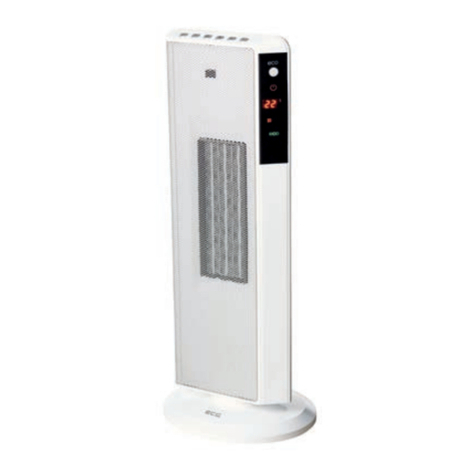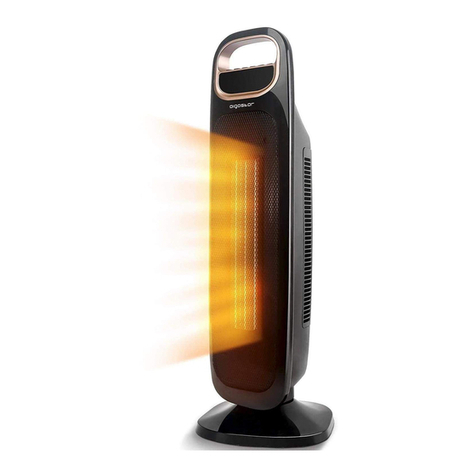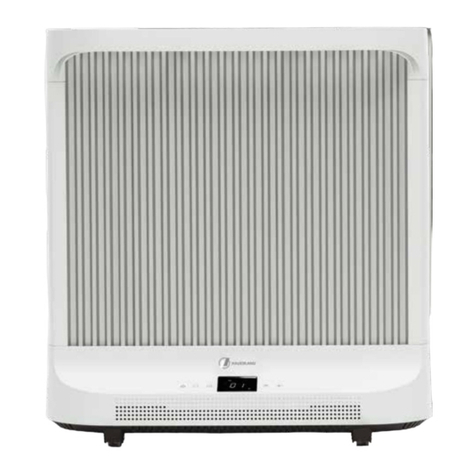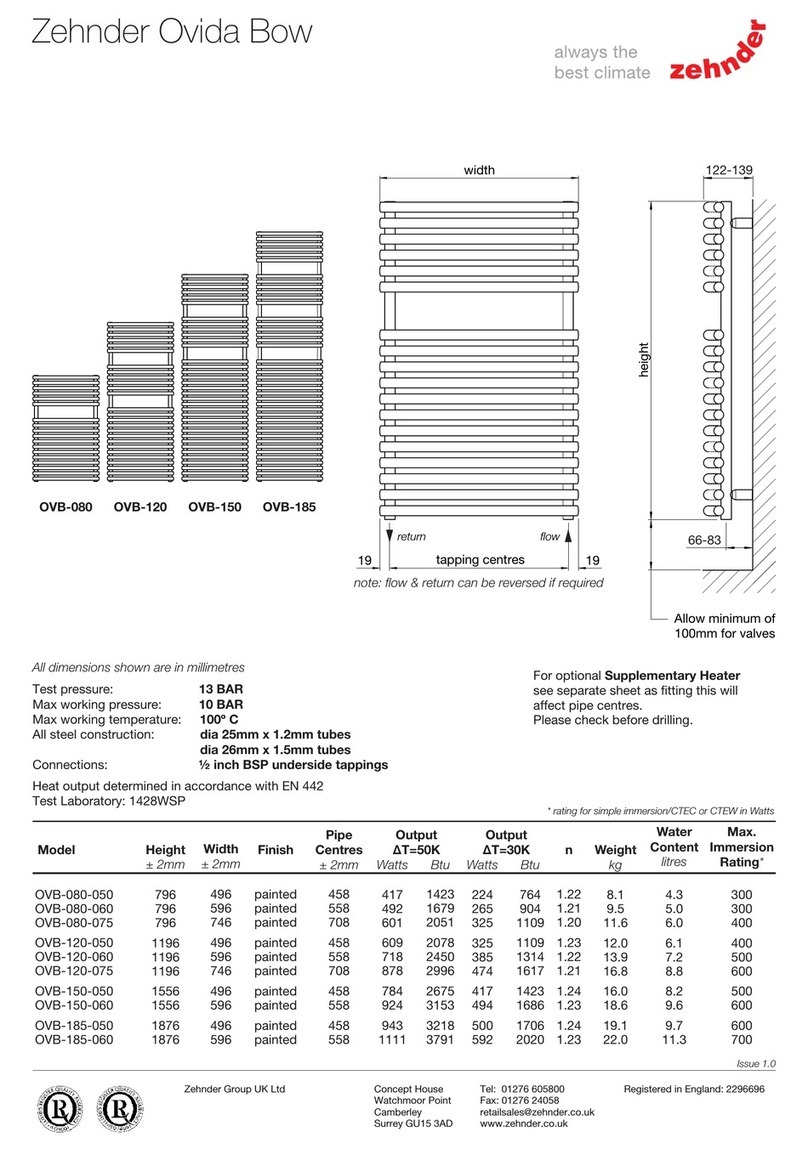PSI I3 Manual

Congratulations!
You have purchased the finest radiant heater available for the heating of livestock
in agricultural animal confinement buildings.
Your new PSI radiant heater incorporates the benefits from the most experienced
manufacturer of heating products using state-of-the-art technology.
We, at PSI, thank you for your confidence in our products and welcome any
suggestions or comments you may have...call us toll free at (800) 562-2966.
Owner’s Manual and Instructions
Modulating Infraconic
Agricultural Building Radiant Heaters
F150-81442-B
MODEL OUTPUT (Btuh) FUEL
I32,800 Propane Vapor
Withdrawal
or Natural Gas
ATTENTION ALL USERS
This heater has been tested and approved by CSA International in accordance with
AGA Requirements for Gas Fired Brooders No. 8-94 and Canadian Gas Association
Requirememts for Gas Fired Brooders, CAN1-2.20-M85 as a direct gas-fired radiant
heater with intended use for the heating of livestock in agricultural animal
confinement buildings. If you are considering using this product for any application
other than its intended use, then please contact your fuel gas supplier, or
PSI Heating Systems.
W6636 East Avenue North, Onalaska, WI USA ■(608) 781-8500 ■Fax: (608) 783-6115
Certification by:


WARNING
Fire and Explosion Hazard
■Not for home or recreational vehicle use.
■Installation of this heater in a home or
recreational vehicle may result in a fire or
explosion.
■Fire or explosions can cause property
damage or loss of life.
FOR YOUR SAFETY
If you smell gas:
1. Open windows.
2. Don't touch electrical switches.
3. Extinguish any open flame.
4. Immediately call your gas supplier.
FOR YOUR SAFETY
Do not store or use gasoline or other
flammable vapors and liquids in the vicinity of
this or any other heater.
WARNING
Fire and Explosion Hazard
■Keep solid combustibles a safe distance
away from the heater.
■Solid combustibles include wood or paper
products, feathers, straw, and dust.
■Do not use the heater in spaces which
contain or may contain volatile or airborne
combustibles.
■Volatile or airborne combustibles include
gasoline, solvents, paint thinner, dust
particles or unknown chemicals.
■Failure to follow these instructions may
result in a fire or explosion.
■Fire or explosions can lead to property
damage, personal injury or loss of life.
GENERAL HAZARD WARNING
■Failure to comply with the precautions and instructions provided with this heater, can result in:
— Death
— Serious bodily injury or burns
— Property damage or loss from fire or explosion
— Asphyxiation due to lack of adequate air supply or carbon monoxide poisoning
— Electrical shock
■Read this Owner’s Manual before installing or using this heater.
■Only properly-trained service people should repair or install this heater.
■Save this Owner’s Manual for future use and reference.
■Owner’s Manuals and replacement labels are available at no charge. For assistance, contact
PSI Heating Systems at 800-562-2966.
WARNING
■Proper gas supply pressure must be provided to the inlet of the heater.
■Refer to rating plate for proper gas supply pressure.
■Gas pressure in excess of the maximum inlet pressure specified at the heater inlet can cause
fires or explosions.
■Fires or explosions can lead to serious injury, death, building damage or loss of livestock.
■Gas pressure below the minimum inlet pressure specified at the heater inlet may cause
improper combustion.
■Improper combustion can lead to asphyxiation or carbon monoxide poisoning and therefore
serious injury or death to humans and livestock.
2

This owner's manual includes all options and accessories
commonly used on or with this heater. However, depending
on the configuration purchased, some options and
accessories may not be included.
When calling for technical service assistance, or for other
specific information, always have the model number and
serial number available.
This manual will instruct you in the operation and care of
your radiant heater. Have your qualified installer review this
manual with you so that you fully understand the heater and
how it functions.
The gas supply line installation, and the repair, installation
and servicing of the heater requires continuing expert
training and knowledge of gas heaters and should not be
attempted by anyone who is not so qualified. See page 6
for definition of the necessary qualifications.
Contact your local PSI distributor, or PSI Heating Systems for
assistance, or if you have any questions about the use of
the heater or its application.
PSI has a policy of continuous product improvement. It
reserves the right to change specifications and design
without notice.
SECTION PAGE
General Information . . . . . . . . . . . . . . . . . . . . . . . . . . . . . . . . . . . . . . . . . . . . . . . . . . . . . . . . . . . . . . . . . . .3
Heater Specifications . . . . . . . . . . . . . . . . . . . . . . . . . . . . . . . . . . . . . . . . . . . . . . . . . . . . . . . . . . . . . . . . . .4
Safety Precautions . . . . . . . . . . . . . . . . . . . . . . . . . . . . . . . . . . . . . . . . . . . . . . . . . . . . . . . . . . . . . . . . . . . .6
Installation Instructions
General . . . . . . . . . . . . . . . . . . . . . . . . . . . . . . . . . . . . . . . . . . . . . . . . . . . . . . . . . . . . . . . . . . . . . . . . .7
Filter Assembly . . . . . . . . . . . . . . . . . . . . . . . . . . . . . . . . . . . . . . . . . . . . . . . . . . . . . . . . . . . . . . . . . . .8
Zone Control Panel Function and Installation . . . . . . . . . . . . . . . . . . . . . . . . . . . . . . . . . . . . . . . . . . .9
Start-Up Instructions . . . . . . . . . . . . . . . . . . . . . . . . . . . . . . . . . . . . . . . . . . . . . . . . . . . . . . . . . . . . . . . . .10
Shut-Down Instructions . . . . . . . . . . . . . . . . . . . . . . . . . . . . . . . . . . . . . . . . . . . . . . . . . . . . . . . . . . . . . . .10
Cleaning Instructions
A. Heater . . . . . . . . . . . . . . . . . . . . . . . . . . . . . . . . . . . . . . . . . . . . . . . . . . . . . . . . . . . . . . . . . . . . . . .11
B. Filter . . . . . . . . . . . . . . . . . . . . . . . . . . . . . . . . . . . . . . . . . . . . . . . . . . . . . . . . . . . . . . . . . . . . . . . .11
Maintenance Instructions . . . . . . . . . . . . . . . . . . . . . . . . . . . . . . . . . . . . . . . . . . . . . . . . . . . . . . . . . . . . .12
Service Instructions
General . . . . . . . . . . . . . . . . . . . . . . . . . . . . . . . . . . . . . . . . . . . . . . . . . . . . . . . . . . . . . . . . . . . . . . . .12
Safety Gas Control Valve & Burner Orifice . . . . . . . . . . . . . . . . . . . . . . . . . . . . . . . . . . . . . . . . . . . .13
Thermostatic Head . . . . . . . . . . . . . . . . . . . . . . . . . . . . . . . . . . . . . . . . . . . . . . . . . . . . . . . . . . . . . .13
Thermocouple . . . . . . . . . . . . . . . . . . . . . . . . . . . . . . . . . . . . . . . . . . . . . . . . . . . . . . . . . . . . . . . . . . .13
Gas Pressure Checks . . . . . . . . . . . . . . . . . . . . . . . . . . . . . . . . . . . . . . . . . . . . . . . . . . . . . . . . . . . . .14
Troubleshooting Guide . . . . . . . . . . . . . . . . . . . . . . . . . . . . . . . . . . . . . . . . . . . . . . . . . . . . . . . . . . . . . . . .15
Heater Component Function . . . . . . . . . . . . . . . . . . . . . . . . . . . . . . . . . . . . . . . . . . . . . . . . . . . . . . . . . . .20
Parts Identification
Parts Schematic . . . . . . . . . . . . . . . . . . . . . . . . . . . . . . . . . . . . . . . . . . . . . . . . . . . . . . . . . . . . . . . . .21
Parts List . . . . . . . . . . . . . . . . . . . . . . . . . . . . . . . . . . . . . . . . . . . . . . . . . . . . . . . . . . . . . . . . . . . . . . .22
Warranty Policy . . . . . . . . . . . . . . . . . . . . . . . . . . . . . . . . . . . . . . . . . . . . . . . . . . . . . . . . . . . . . . . . . . . . .23
Replacement Parts and Service . . . . . . . . . . . . . . . . . . . . . . . . . . . . . . . . . . . . . . . . . . . . . . . . . . . . . . . .23
Table of Contents
General Information
3

I3
Maximum Input (Btuh) 2,800
Ventilation Air to Support Combustion (CFM)
Zone Control PROPANE GAS OR
Full Output Pressure NATURAL GAS
Zone Control, PROPANE GAS OR
Low Heat Pressure NATURAL GAS
“A” 7-5/8 in.
“B” 7 in.
“C” 3-1/2 in.
Net Weight (Lbs) 1-1/2 lbs.
PROPANE GAS .13 lbs./hr.
NATURAL GAS
24 in. Above Floor Level.
If Locating Over Dividers, At Least 4 in. Above Divider.
TOP OF SHROUD 2-1/2 ft.
VERTICALLY FROM POINT OF
COMBUSTION CONE
SIDES 2 ft.
4
Radiant Heater Specifications
SPECIFICATIONS
MMooddeell
FIG. 1
Heater Dimensions (Inches)
See Fig. 1
Fuel Consumption Per Hour
Minimum Safe Clearances to
Combustible Materials
Recommended Installation Height
24 in.
2.8 CFH
10 - 12 in. W.C.
35
5 PSIG
(1) This is a typical sensor height range for farrowing installations. Care should always be taken to ensure that the sensor is
sufficiently high as to not be damaged by the animal during operation.
"B"
"A"
"C"
Animal Occupied Zone Temperature
Control Sensor Location (1)
VERTICAL FROM FLOOR 18 in.
HORIZONTAL FROM CENTER OF BROODER 8 in.

LP ggas aand nnatural ggas hhave mman-mmade oodorants aadded sspecifically ffor ddetection oofffuel ggas lleaks.
If aaggas lleak ooccurs, yyou sshould bbeaable ttossmell tthe ffuel ggas.
THAT’S YYOUR SSIGNAL TTOGGOIINTO IIMMEDIATE AACTION!
■Do not take any action that could ignite the fuel gas. Do
not operate any electrical switches. Do not pull any
power supply or extension cords. Do not light matches
or any other source of flame. Do not use your
telephone.
■Get everyone out of the building and away from the area
immediately.
■Close all propane gas tank or cylinder fuel supply
valves, or the main fuel supply valve located at the
meter if you use natural gas.
■Propane gas is heavier than air and may settle in low
areas. When you have reason to suspect a propane
leak, keep out of all low areas.
■Natural gas is lighter than air and can collect around
rafters or ceilings.
■Use your neighbor’s phone and call your fuel gas
supplier and your fire department. Do not re-enter the
building or area.
■Stay out of the building and away from the area until
declared safe by the firefighters and your fuel gas
supplier.
■FINALLY, let the fuel gas service person and the
firefighters check for escaped gas. Have them air out
the building and area before you return. Properly
trained service people must repair the leak, check for
further leakages, and then relight the heater for you.
■Some ppeople ccannot ssmell wwell. SSome ppeople ccannot
smell tthe oodor ooftthe mman-mmade cchemical aadded tto
propane oornnatural ggas. YYou mmust ddetermine iifyyou ccan
smell tthe oodorant iintthese ffuel ggases.
■Learn to recognize the odor of propane gas and natural
gas. Local propane gas dealers and your local natural
gas supplier (utility) will be more than happy to give you
a “scratch and sniff” pamphlet. Use it to become
familiar with the fuel gas odor.
■Smoking can decrease your ability to smell. Being
around an odor for a period of time can affect your
sensitivity to that particular odor. Odors present in
animal confinement buildings can mask fuel gas odor.
■The oodorant iinppropane ggas aand nnatural ggas iisccolorless
and tthe iintensity oofiits oodor ccan ffade uunder ssome
circumstances.
■If there is an underground leak, the movement of gas
through the soil can filter the odorant.
■Propane gas odor may differ in intensity at different
levels. Since propane gas is heavier than air, there may
be more odor at lower levels.
■Always bbessensitive ttotthe sslightest ggas oodor. If you
continue to detect any gas odor, no matter how small,
treat it as a serious leak. Immediately go into action as
discussed previously.
FUEL GAS ODOR
ODOR FADING -- NO ODOR DETECTED
ATTENTION -- CRITICAL POINTS TO REMEMBER!
■Propane gas and natural gas have a distinctive odor.
Learn to recognize these odors. (Reference “Fuel Gas
Odor” and “Odor Fading” sections above.
■
If you have not been properly trained in repair and service
of propane gas and natural gas fueled heaters, then do
not attempt to light the heater, perform service or repairs,
or make any adjustments to the heater on a propane (LP)
gas or natural gas fuel system.
■Even if you are not properly trained in the service and
repair of radiant heaters, ALWAYS be consciously aware
of the odors of propane gas and natural gas.
■A periodic “sniff test” around the heater or at the
heater’s joints; i.e. hose, connections, etc., is a good
safety practice under any conditions. If you smell even
a small amount of gas, CONTACT YOUR FUEL GAS
SUPPLIER IMMEDIATELY. DO NOT WAIT!
5
WARNING
■Do not use this radiant heater for heating human living
quarters.
■Do not use in unventilated areas.
■The flow of combustion and ventilation air must not be
obstructed.
■Proper ventilation air must be provided to support the
combustion air requirements of the heater being used.
■Refer to the specification section of the Owner’s
Manual, heater’s dataplate, or contact PSI to determine
combustion air ventilation requirements of the heater.
■Lack of proper ventilation air will lead to improper
combustion.
■Improper combustion can lead to carbon monoxide
poisoning in humans leading to serious injury or death.
Symptoms of carbon monoxide poisoning can include
headaches, dizziness and difficulty in breathing.
■Symptoms of improper combustion affecting livestock
can be disease, lower feed conversion, or death.
Asphyxiation Hazard
Safety Precautions

1. Do not attempt to install, repair or service this heater
or the gas supply line unless you have continuing
expert training and knowledge of gas heaters.
Qualifications for service and installation of this
equipment are as follows:
QUALIFICATIONS FOR
SERVICING AND INSTALLATION:
a. To be a qualified gas heater service person, you
must have been trained in gas-fired heater
servicing, repair and also have sufficient
experience to allow you to troubleshoot, replace
defective parts, and test heaters in order to get
them into a continuing safe and normal operation
condition. You must completely familiarize
yourself with each model heater by reading and
complying with the safety instructions, labels,
owner’s manual, etc. that is provided with each
heater.
b. To be a qualified gas installation person, you must
have sufficient training and experience to handle
all aspects of installing, repairing and altering gas
lines, including selecting and installing the proper
equipment, and selecting proper pipe size to be
used. This must be done in accordance with all
local, state and national codes as well as the
manufacturer’s requirements.
2. All installations or applications of PSI radiant heater’s
and associated zone control panel should meet the
requirements of local, state and national L.P. gas and
natural gas, electrical and safety codes. Your gas
supplier, local licensed electrician, local fire
department and government agencies can help you
determine these requirements. In the absence of
local codes, comply with the following:
a. Installations in the U.S.A.:
-- ANSI/NFPA 58, latest edition, Standard for
Storage and Handling of Liquefied
Petroleum Gas and/or
-- ANSI Z223.1/NFPA 54, National Fuel Gas
Code
b. Installations in Canada:
-- CAN1-B149.1 or CAN1-B149.2 Installation
Codes
-- CSA C22.1 Part 1 Standard Canadian Electrical
Codes, CSA C22.2 No.3 Electrical Features of
Fuel Burning Equipment
3. If at any time you notice something unusual about the
operation of your heater such as gas odor,
overheating, flames other than in the combustion
cone area, etc., evacuate the area immediately and
call your fire department and your gas service
agency. Get assurances from the fire department
that the area is free of gas before you attempt to
relight the heater.
4. The components on the heater that call for hand
operation should work with hand pressure only. If
more force is required, have a qualified gas heater
service agency replace the complete part. Do not
attempt to repair.
5. This heater is intended for the heating of livestock in
agricultural animal confinement buildings only. The
heater shall only be mounted inside the animal
confinement building. It shall not be used for outside
heating applications.
6. Do not locate fuel gas containers or fuel supply hoses
anywhere within the heating zone of the heater.
7. Do not block air intakes or discharge outlets of the
heater. Doing so may cause improper combustion or
damage to the heater components leading to
property damage or animal loss.
8. Do not move, handle, or service the heater while in
operation or connected to fuel supply.
9. All gas hose assemblies must be inspected on a
regular basis. This should be done at least once a
year, or when the building is cleaned out. If it is
evident there is excessive abrasion or wear, or if the
hose is cut, it must be replaced prior to heater being
put into operation. The hose assembly shall be
protected from animals, building materials, and
contact with hot surfaces during use. The hose
assembly shall be that specified by the manufacturer.
See parts list.
10. Check for gas leaks and proper function upon
installation, before building repopulation and when
relocating.
11. If the gas flow is interrupted and the burner flame is
extinguished, immediately shut off the gas. Do not
relight the heater until you are sure that all of the gas
that may have accumulated through the heater has
cleared away. Do not relight the heater until at least
five minutes have passed.
6
WARNING
Burn HHazard
■The heater’s combustion cones and canopy are
extremely hot during operation and shortly after
shutting down.
■Always be aware of your proximity to the heater and
avoid contact with its hot surfaces during or shortly
after operation.
■Failure to follow this warning can result in burns
leading to severe injury.
Safety Precautions

1. Read all safety precautions and follow PSI
recommendations when installing this heater. If
during the installation or relocating of the heater, you
suspect that a part is damaged or defective, call a
qualified service agency for repair or replacement.
2. Position the heater properly before use in accordance
with requirements for combustible clearances,
ground clearance, tilt angle, and to protect the heater
from livestock.
3. Position the gas hose outside of the hot zone directly
above the heater. Position the gas hose to avoid any
contact with the hot surfaces of the heater. The
optional gas supply hose kits include an in-line excess
flow valve.
4. This heater is designed specifically for the heating of
farrow pens in swine confinement buildings. When
installed with an optional hanging kit over a common
divider panel, one heater will provide heat to animals
in adjacent pens. The hanging kits include mounting
instructions.
5. The installer must ensure the heater is hung properly
to prevent heat stress to the adult animal.
6. The heater may be located over farrow pen divider
panels made of metal, or more commonly used PVC
or ABS materials. If tthe hheater iishhung oover ppen
dividers mmade oofnnon-mmetal mmaterial, aanooptional hheat
shield, ppart nnumber 223429, mmust bbeiinstalled tto
prevent hheat ddamage ttotthe ppanel.
7. Insure that all accessories that ship with heater have
been installed. This pertains to gas hose, regulators,
etc.
8. The heater’s gas regulator (with pressure relief valve)
should be installed outside of building. Any
regulators inside the buildings must be properly
vented to the outside. Local, state and national codes
always apply to regulator installation. Natural gas
regulators with a vent limiting device may be mounted
indoors without venting to outdoors.
9. Any regulator mounted outside the building be
protected against the weather, particularly ice
formation. Ice formation can lead to
overpressurization of the regulator and subsequent
gas leaks. See codes covering proper protection.
10. Always use pipe joint compound that is resistant to
liquefied petroleum gas and natural gas.
11. Check all connections for gas leaks using approved
gas leak detectors. Gas leak testing is performed as
follows:
-- Check all pipe connections, hose connections,
fittings and adapters upstream of the gas
control with approved gas leak detectors.
-- In the event a gas leak is detected, check the
components involved for cleanliness and
proper application of pipe compound before
further tightening.
-- Tighten the gas connections as necessary to
stop the leak.
7
Installation Instructions
GENERAL
12. If the heater is to be relocated, make sure that all gas
connections are capped and the gas supply is shut
off. All connection points must be leak checked after
disconnection and after reconnection.
13. The grower shall inspect the heater before building
repopulation. Such inspection should consist of, but
is not limited to, the following points of action:
-- Insure proper clearance to combustible materials.
-- Check for general cleanliness. Clean if necessary.
-- Check gas hose connections for tightness.
14. A qualified service person shall inspect the heater
and its gas train at least on an annual basis. This
should consist of, but is not limited to, the following
points of action:
-- Start-up and shut down of the heaters and zone
control panel to test for proper operation.
-- Leak check of all pipe joints and hose connections.
-- Thorough cleaning of the exterior of the heater, its
inlet venturi, combustion cones and filter.
-- Thorough inspection of the heater’s component
parts for corrosion, stripped threads, etc. with
subsequent parts replacement as necessary.
-- Gas pressure checks.
15. Turn off the gas supply when the heater is not in use.
WARNING
Fire aand EExplosion HHazard
■Do not use open flame (matches, torches, candles,
etc.) in checking for gas leaks.
■Use only approved leak detectors.
■Failure to follow this warning can lead to fires or
explosions.
■Fires or explosions can lead to property damage,
personal injury or death.

FILTER
BEADED CABLE TIE
MAIN BODY
COLLAR ON AIR INTAKE
AB
8
-- After all connections are checked and any
leaks are eliminated, light the heater.
-- Stand clear while the heater ignites to prevent
injury caused from hidden leaks that could
cause flashback.
-- With the heater in operation, check all
connections, hose connections, fittings and
joints as well as the gas control valve inlet and
outlet connections with approved gas leak
detectors.
-- If a leak is detected, check the components
involved for cleanliness in the thread areas
and proper application of pipe compound
before further tightening.
-- Tighten the gas connection as necessary to
stop the leak.
-- If necessary, replace the parts or components
involved if the leak cannot be stopped.
-- Ensure all gas leaks have been identified and
repaired before proceeding.
12. A qualified service agency must check for proper
operating gas pressures upon installation of the
heaters.
13. Use the proper gas supply line to assure proper
functioning of the heaters. Typically, 3/4 in. ID black
iron pipe is used to supply gas to the inlet of the zone
control panel with 1/2 in. ID black iron pipe used to
convey the gas to the heaters. However, always
consult your fuel gas supplier, or PSI for proper line
sizing and installation.
14. Infraconic heaters require a regulated gas supply to
the zone control panel’s gas inlet. Exceeding the gas
inlet pressure rating can result in poor performance
and unreliable operation. Refer to page 4 of this
manual for information on gas pressures relating to
specific models.
15. The heater is designed for either propane vapor with-
drawal or natural gas, depending on model number.
Do not use this heater in an propane liquid
withdrawal system. Do not permit propane in liquid
form to enter the heater at any time.
16. The corrosive atmosphere present in animal
confinement buildings can cause component failure
or heater malfunction. The heater should be
periodically inspected and cleaned in accordance
with the Maintenance and Cleaning Instructions in
this manual. Make sure that livestock is protected by
a back up alarm system that limits high and low
temperatures and also activates appropriate alarms.
17. Take time to understand how to operate and maintain
the heater using this Owner’s Manual. Make sure
you know how to shut off the gas supply to the
building and to the individual heaters. Contact your
gas supplier if you have any questions.
18. Any defects found in performing any of the service
procedures must be eliminated and defective parts
replaced immediately. Retest the heater before
placing it back into service.
FILTER ASSEMBLY
1. See Fig. 2 for attaching filter to heater.
A. Push filter completely onto air intake.
B. Attach filter to intake by using beaded cable tie.
Ensure cable tie securely fastens filter to air intake
of heater
2. The filter may be removed by loosening the beaded
cable tie.
AB
FIG. 2

The zone control panel is a remote mounted control system
allowing the operation of a specific number of heaters within
a heating zone.
The panel will control the following quantity of heaters
depending on fuel type.
The zone control panel must be mounted to a flat, stable
wall inside the building. Use lag screws provided. Ensure
that the thermostatic control module is not exposed to
outside air temperatures. Exposure of the thermostatic
control module to outside air temperatures may cause the
heater to provide unwanted heat.
The zone control panel is a modulating design and
thermostatically controlled for stand alone, non-electric
operation.
The zone panel’s sensor bulb should be located within the
farrowing pen as shown in Fig. 3 to accurately sense pen
temperatures. Consideration must also be given to sensor
height to prevent damage by animals.
The zone control panel must have an adjustable high
pressure regulator installed upstream of the its gas inlet.
This regulator may be purchased as an optional accessory,
Part # 09703. For L.P. gas, the regulator must be capable
of handling a maximum inlet pressure of 10 psi, while
supplying an outlet pressure of 5 psi nominal. For natural
gas, a regulator must be installed to supply an outlet
pressure of 5 psi nominal.
ZONE CONTROL PANEL FUNCTION AND INSTALLATION
Modulating System
Medium
Model and Capacity
Heat Output Fuel Panel
Quantity
I3 L. P. Gas 83
(2,800 BTUH) Natural Gas 48
9
ZONE PANEL
CAPILLARY
CRATE
DIVIDER PANEL
8 IN.
18 IN.
CRATE
SENSOR 8 IN. FROM CENTER
POINT OF COMBUSTION CONE
AND 18 IN. MIN. FROM FARROW
PEN DECKING
FIG. 3

SAFETY CONTROL
VALVE BUTTON
INDICATOR
100ºF
38ºC
THERMOSTATIC
HEAD
10
Follow these start-up instruction steps for initial start-up
before building repopulation. For normal start-up, simply
turn the thermostatic head above room temperature.
1. Open all gas supply valves to the heater(s) and check
for gas leaks at all connections using approved leak
detectors.
2. Adjust the zone panel’s thermostatic head to its
maximum temperature setting. See Fig. 4. Wait 15 -
30 seconds to allow the zone gas supply pressure to
stabilize.
FIG. 4
3. Fully depress the button on the safety control valve
while applying flame to the inner cone point. Keep
the button fully depressed for about 30 seconds until
the inner cone stays lit. Allow outer combustion cone
to heat up completely.
4. Adjust the temperature by decreasing the setpoint on
the thermostatic head to the desired temperature.
The heater will modulate from low heat to high heat
based upon thermostatic head set point.
FIG. 5
Start-Up Instructions
WARNING
Fire oorEExplosion HHazard
■Do not force the safety gas control valve button.
■Use only your hand to depress the gas control button.
Never use any tools.
■If the button will not depress by normal hand
pressure, the control should be replaced by a
qualified service person.
■Force or attempted repair may result in fire or
explosion, causing property damage, severe injury, or
death.
To reduce temperature, simply turn down the thermostatic
control on the zone panel.
To shut down the heaters for maintenance, cleaning or
service:
1. Shut off all gas supply valves to the heaters.
2. Allow heaters to burn off fuel gas remaining in the
gas supply line.
3. Turn down the thermostatic head to minimum
setting.
Shut-Down Instructions

CAUTION
■Disinfectants utilized in agricultural animal
confinement buildings may contain chemicals
damaging to components of the heater.
■Protect the safety gas control valve by wrapping with a
plastic bag before disinfecting.
■Always make sure to remove the plastic bag or other
protective covering before start up.
Cleaning Instructions
It is important to clean the heater betweeen turns to
maintain proper combustion and to eliminate future
problems.
ATTENTION
Problems associated with lack of cleaning typically are:
■Black soot on inside of canopy.
■Gas backflashing in venturi tube or injector body.
■Burner flame appearing beyond outer cone.
Ensure gas is shut off and filter is removed prior to cleaning
process. When cleaning is completed, install filter, ensure
heater is at proper hanging position,and all gas connections
to the heater are securely tightened. Open fuel supply
valves and light the heaters.
CCLLEEAANNIINNGGWWIITTHHPPRREESSSSUURRIIZZEEDDAAIIRR
1. Direct air against combustion cones to blow out
buildup of dust in cones and venturi tube. Reverse
the process and blow air into the air intake opening
and out through combustion cones.
2. Repeat until dust no longer comes from heater.
3. Inspect the heater to ensure reasonable cleanliness.
FIG. 6
CCLLEEAANNIINNGGWWIITTHHWWAATTEERR
Cleaning the heater with water using standard faucet
pressure. DO NNOT UUSE HHIGH PPRESSURE WWASHERS!
1. Wrap the safety control valve with a plastic bag to
protect this part from water.
2. Spray water against the cones to wash out the build
up of dust in the cones and the venturi tube. Work
your way around the entire cone assembly. Reverse
the process and run water through the air intake and
out through combustion cones. See Fig. 7.
FIG. 7
3. Repeat until water runs clean.
4. Remove bag. Inspect heater to ensure it is
reasonably clean.
5. Light the heater to dry it.
B. FILTER
Refer to the following for filter cleaning instructions.
A. Between building turns:
- Remove filter and shake it.
- Use compressed air or standard faucet
pressure to clean it.
- Do not use high pressure water, air, or a washing
machine. Filter material damage may occur.
- If water is used, squeeze out excess water from
filter before installation.
- Let filter dry before lighting heater.
B. During turn while heater is in use:
- Remove filter and shake off dust.
- Do not squeeze or tap filter while filter is installed
on heater. Doing so will cause dust to be blown
into venturi tube or combustion cones.
11
AIR INTAKE
AIR NOZZLE
COMBUSTION CONES
AIR NOZZLE
AIR INTAKE
WATER NOZZLE
COMBUSTION CONES
WATER NOZZLE

12
Service Instructions
1. Close the fuel supply valve to the heater before
servicing unless it is necessary to have it open for
your service procedure.
2. For reassembly, reverse the respective service
procedure. Ensure gas connections are tightened
securely.
3. After servicing, start the heater to ensure proper
operation and check for gas leaks.
4. Clean the heater’s orifice with compressed air or a
soft, dry rag. Do not use files, drills, broaches, etc. to
clean the orifice hole. Doing so will enlarge the hole,
causing combustion or ignition problems. Replace
the orifice if it cannot be cleaned properly.
WARNING
BBuurrnnHHaazzaarrdd
■Heater surfaces are extrememly hot for a period of
time after the heater has been shut down.
■Allow the heater to cool before performing service,
maintenance, or cleaning.
■Failure to follow this warning will result in burns
causing injury.
GENERAL
WARNING
FFiirreeaannddEExxpplloossiioonnHHaazzaarrdd
■Do not disassemble or attempt to repair any heater
components or gas train components.
■All component parts must be replaced if defects are
found.
■Failure to follow this warning will result in gas leaks
leading to fire or explosions, causing property
damage, injury, or death.
1. Have your gas supplier check all gas piping annually
for leaks or restrictions in gas lines. Also, at this time
have your gas supplier clean out the sediment trap on
the zone control panel of any debris that may have
accumulated.
2. The hheater’s ssurrounding aarea sshall bbekkept cclear aand
free ffrom ccombustible mmaterials, ggasoline, aand oother
flammable vvapors aand lliquids.
3. Regulators can wear out and function improperly.
Have your gas supplier check the date codes on all
regulators installed and check delivery pressures to
the appliance to make sure that the regulator is
suitable for continued use.
4. Regulators must be periodically inspected to make
sure the regulator vents are not blocked. Debris,
insects, insect nests, snow, or ice on a regulator can
block vents and cause excess pressure at the
appliance.
5. For safety as well as for optimum performance at the
heater, it is necessary to keep the inside and the
outside of the heater free of dust, dirt or any
combustible material.
6. Immediately replace components which show signs of
rust or corrosion.
7. If any warning or instruction labels, dataplates, etc.
become lost or hard to read, replace them
immediately. Do not operate the heater until you
have all instructions and can read and understand
them.
8. Check overall condition of heater for cracked or
damaged components, loose screws or bolts, etc.
Replace any suspect components.
9. Check all hose and tubing assemblies for cracks,
abrasions or ruptures. Replace any hoses that are
suspect.
10. Check the installation periodically during use to make
sure the hanging kit is level and securely tightened to
the crate. Also, ensure hanging rod is plumb.
11. Clean the heater and filter between building turns.
Refer to cleaning instructions in this manual.
Maintenance Instructions

ATTACHMENT
KNOB
THERMOSTATIC
HEAD
13
THERMOSTATIC HEAD
ATTENTION
The head assembly on the zone panel includes the
adjustable thermostatic head, capillary and sensor. The
Part # for the thermostatic head is 23662, with 26 ft.
capillary.
The symptom of component failure would be the heater
staying at full heat output and not responding to lower
temperature setting of thermostatic head.
1. Loosen the attachment knob located at the
thermostatic head and valve body, and discard head.
See Fig. 9.
2. Securely tighten the knob of the replacement head to
the valve body, otherwise temperature sensing will be
affected.
FIG. 9
1. Remove gas hose and disconnect thermocouple at
safety control valve.
2. Remove air intake retaining screw.
3. Pull gas control assembly from heater.
4. Remove burner orifice if necessary. Use a 6 mm nut
driver. Clean the orifice or replace it.
FIG. 8
SCREW
AIR INTAKE
BURNER ORIFICE
1. Remove the thermocouple bracket nut.
See Fig. 10.
2. Pull the thermocouple from its mounting location.
3. Disconnect thermocouple from pilot safety gas control
valve. Replacement thermocouple will include a
factory installed locator bracket with retaining nut.
THERMOCOUPLE
HOLE
STUD
INJECTOR TUBE
NUT
THERMOCOUPLE
LOCATION BRACKET
FIG. 10
THERMOCOUPLE
SAFETY GAS CONTROL VALVE
& BURNER ORIFICE

TEST KIT HOSE
FUEL SUPPLY VALVE
(OPEN THIS VALVE TO
USE PRESSURE GAUGE)
GAS SUPPLY HOSE
GAS INLET OF HEATER
PRESSURE GAUGE KIT
20736
OPEN
FIG. 11
A. Preparation
1. Obtain a pressure gauge test kit, Part # 81440.
2. Close the fuel supply valve to the heater.
3. Brush or blow off any dust and dirt on or in the vicinity
of the safety control valve.
4. Disconnect the gas hose from the heater.
B. Gauge IInstallation
1. Connect the pressure test kit between the heater and
its gas supply hose as shown in Fig. 11. Insure both
gas shut-off valves on the test kit are in the closed
position when connecting the kit to the heater and
gas supply.
2. Open the fuel supply valve to the heater.
3. Open only the gas shut-off on the test kit to which the
gas supply hose is connected.
4. Adjust the thermostatic head to its maximum setting
and light the heater.
C. Reading PPressures
1. With the heater operating at full heat output and at
minimum heat, the pressure gauge should read the
pressure specified on the dataplate of the zone
panel.
2. Does the reading on the gauge of the test kit agree
with that specified on the dataplate? If so, then no
further checking or adjustment is required. Proceed
to Section D.
3. If the pressure does not agree with that specified on
the dataplate, then the regulator controlling gas
pressure to the heater requires adjustment.
D. Completion
1. Once gas pressure has been confirmed and/or
properly set, close the fuel supply valve to the heater
and allow the heater to burn off any gas remaining in
the gas supply hose.
2. Remove the gauge kit and reconnect the heater’s gas
hose to the heater.
3. Open the main fuel supply valves to the heater. Light
the heater.
4. Set thermostatic head to desired temperature.
GAS PRESSURE CHECKS
14
81440

15
READ THIS ENTIRE SECTION BEFORE
BEGINNING TO TROUBLESHOOT PROBLEMS.
The following troubleshooting flow charts provide systematic
procedures for isolating heater problems. The charts are
intended for use by a QUALIFIED GAS HEATER SERVICE
PERSON. DO NNOT SSERVICE TTHE HHEATER UUNLESS YYOU HHAVE
BEEN PPROPERLY TTRAINED.
TEST EQUIPMENT REQUIRED
The following pieces of test equipment will be required to
troubleshoot this system with minimal time and effort.
• Digital MMultimeter - For measuring DC voltage when using
thermocouple diagnostic kit.
• Thermocouple DDiagnostic KKit - (Part # 21188) When used
with a standard digital multimeter, this kit allows testing of
the thermocouple and electromagnetic power unit.
• Pressure GGauge - (Part # 81440) For checking inlet
pressures to the heaters.
INITIAL PREPARATION
-- Inspect heater for damage.
-- Clean heater as necessary.
Heater PProblems Page
1. Inner Combustion Cone will not Light . . . . . . . . . . . . . . .16
2. Inner Combustion Cone Lights,
but will not Stay Lit . . . . . . . . . . . . . . . . . . . . . . . . . . . . . .17
3. Outer Combustion Cone Does Not Heat up on
High Thermostatic Head Setting . . . . . . . . . . . . . . . . . . .18
4. Heater Backflashes Gas Through Injector Body
Air Inlet . . . . . . . . . . . . . . . . . . . . . . . . . . . . . . . . . . . . . . .19
5. Heater Does Not Return to
Low Heat . . . . . . . . . . . . . . . . . . . . . . . . . . . . . . . . . . . . . .19
Components should be replaced only after each step has
been completed and replacement is suggested in the flow
chart.
Troubleshooting Guide
WARNING
BBuurrnnHHaazzaarrdd
■Troubleshooting this system may require operating the
heater with the burner on. Use extreme caution when
working on the heater.
■Failure to follow this warning will result in burns
causing severe injury.

Is
There a
Blockage in the
Venturi Tube?
16
Problem 11
Inner
Combustion
Cone WWill
Not LLight
Is
Thermostatic
Head Set to
Maximum?
Is the
Orifice Plugged on
the Inside or
Outside?
Turn Thermostat
Up to Its
Maximum
Setpoint.
Remove the Primary Burner
Orifice. Clean with a Soft
Brush or Compressed air.
Yes
No
Yes
Yes
Yes
Is the Inner
Combustion Cone
Plugged?
Is There Air or
a Blockage in the
Gas Hose or
Gas Piping?
Remove Blockage with Compressed
Air or Replace the Gas Hose or Pipe
Section. Bleed Off any Air from the
Gas Line.
Clean the Heater.
Clean the Heater.
No
No
No
Is Proper
Gas Pressure
Supplied to the
Zone Panel or
Heater?
Provide 5 PSIG
Gas Pressure.
Yes
No
Are all Fuel
Supply Valves to
Heater Open?
Open All Fuel
Supply Valves.
Yes
No
Defective
Safety Control Valve.
Replace the Safety
Control Valve.
Yes
No

17
Problem 22
Inner
Combustion
Cone LLights,
but wwill nnot
Stay LLit
Did you
Allow Sufficient Time
for the Thermocouple
to Warm Up?
Is
the Gas Hose
Partially
Plugged?
Allow 30 - 60
Seconds Warm-Up
Before Releasing
Pilot Button.
Remove the Component and
Clean It.
Yes
No
Yes
Yes
Yes
Is
Thermocouple
Defective?
Check Millivolt Output of Thermocouple
with Millivolt Test Kit. Output Should be
at Least 4 mv D.C. A Reading of Less
Than 4 mv D.C. Can Cause Inner Cone
to Go Out. If Thermocouple is Weak,
Replace it.
Is Safety
Control Valve
Defective?
Is Burner Orifice
Plugged? Remove Orifice and Clean It.
Check Gas Pressure to the
Heater Inlet with a Gas Gauge.
Proper Pressure at High Heat
Should Read 5 PSIG. Low Heat
is 10 in. W.C.
No
No
No
Is Thermo-
couple Contact Nut
Tightened Securely into
Gas Control
Valve?
Snug Contact Nut in
Place. (Do Not
Overtighten.) Check for
Debris Between Contact
of Thermocouple and
Electromagnet of Valve.
Yes
No
Is Button
on Safety Control
Valve Fully
Depressed?
Depress the Button on the
Pilot Safety Valve until Gas
Flows Through.
Yes
No
Check Drop-Out of Electromagnet in Safety
Control Valve with the Millivolt Test Kit. The
Valve Magnet Should Drop Out at 2.0 mv D.C.
If the Magnet Drops Out above 2.0 mv D.C.,
Replace the Safety Control Valve.
Yes
Is Proper Gas
Pressure Supplied to
the Heater?
No

18
Problem 33
Outer
Combustion
Cone DDoes
Not HHeat UUp
on HHigh
Thermostat
Setting.
Is Proper
Gas Pressure Being
Supplied to the
Heater?
Check for Proper Gas
Pressure to the Heater.
Proper Pressure at High
Heat Should Read 5 PSIG.
Yes
No
Is
Orifice Plugged? Remove Orifice and
Clean It.
Yes
No
A. Remove Thermostatic Head from
Thermostatic Valve Body at Zone
Panel. If Outer Cone Lights, Replace
Thermostatic Head and Sensor
Assembly.
-- OR --
C. Replace Thermostatic Head
Valve Body on Zone Panel.
Are There
Blockages in
Gas Hose, Piping,
or Venturi Tube?
Remove the Component
and Clean It.
Yes
No

Heater
Backflashes
Gas TThrough
Air IInlet.
19
Problem 44Is Inner
Cone Cracked
or Damaged? Replace Combustion Cones.
Yes
No
Is Air Intake,
Burner Orifice,
Venturi Tube, or
Inner Cone Partially
Plugged with
Debris?
Clean These Areas.
Is Proper
Gas Pressure
Being Supplied to
the Heater?
Check for Proper
Gas Pressure.
Proper Pressure at
High Heat Should
Read 5 PSIG.
Yes
No
No
Problem 55
Heater DDoes NNot
Return BBack tto
Low HHeat.
Does
Main Burner Shut Off
When Thermostatic Head is
Set Below Room
Temperature?
Remove Thermostatic Head from Modulating Valve Assembly at Zone Panel:
A. If Heater Returns to Low Fire When you Push Down on Plunger Pin of Valve,
Replace Thermostatic Head/Sensor Assembly.
B. If Heater Still Does Not Cycle to Low Fire, the Modulating Valve is Sticking and
Should be Replaced.
Combustion Cone Kit
Part Number
23543
Table of contents
Other PSI Heater manuals
